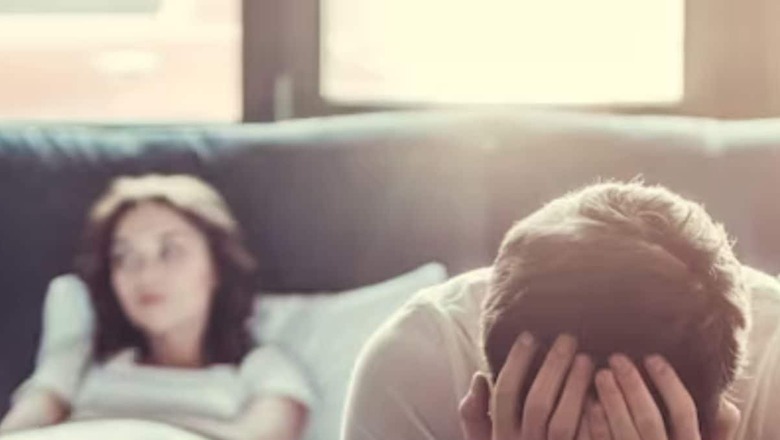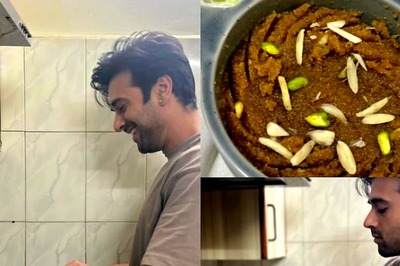
views
In this article, we will share some facts about sperm cramps, its causes, symptoms & when you should see a doctor.
Have you ever experienced a cramping pain in your testicles after ejaculating? If so, you may have a condition known as sperm cramps. Don’t panic — it’s usually not serious and often goes away on its own. But the pain can be intense, leaving you doubled over for up to 30 minutes after sex or masturbation. The medical term for sperm cramps is post-ejaculatory pain syndrome. This refers to discomfort, aching, or cramping in the perineum (the area between the scrotum and anus), lower abdomen, or tailbone that occurs shortly after ejaculation.
What Are Sperm Cramps?
Sperm cramps refers to painful cramping or aching in the pelvic area after ejaculation. The pain usually starts within a minute of ejaculation and can last from a few minutes to a couple of hours. The exact cause of sperm cramps isn’t always clear, but it could be due to an infection, inflammation of the prostate or seminal vesicles, or nerve damage.
The pelvic area contains many sensitive nerves and muscles involved in ejaculation. When these nerves or muscles become inflamed or irritated, it can lead to pain during ejaculation. An enlarged or infected prostate, known as prostatitis, is a common cause of discomfort after ejaculation. The prostate gland and seminal vesicles, which help produce semen, can also become inflamed, resulting in pain on release of ejaculate.
In some cases, sperm cramps may be due to a nerve issue. Damage or pressure on the pudendal nerves, which carry signals from the pelvis to the penis and perineum, can produce pain during and after ejaculation. Sitting for long periods, frequent cycling, or other lifestyle factors may compress these nerves. Changing positions, using a donut pillow, and exercising can help relieve pressure on the pudendal nerves.
Symptoms to Look Out for
Sperm cramps aren’t the only symptom to watch out for after ejaculation. Be on alert for other signs that something may be amiss.
Burning Sensation: If you notice a burning feeling after ejaculating, this could indicate an infection or inflammation of the prostate or seminal vesicles.
Blood in the Semen: Seeing blood in your semen, known as hematospermia, can understandably be alarming. While usually not serious, blood in the semen should be evaluated by a doctor to determine the cause and appropriate treatment.
Lump or Swelling: A lump, bump or swelling in the scrotum or perineum region could signal a problem with the prostate, seminal vesicles or vas deferens.
Painful Urination: Difficulty urinating or pain during urination can sometimes occur along with sperm cramps or other symptoms after ejaculation. This may indicate an infection or inflammation of the prostate, urethra or other parts of the urinary tract.
Abnormal Semen Volume: Noticeably increased or decreased semen volume could be a sign of an underlying issue with the prostate or seminal vesicles and should be evaluated by your doctor.
Common Causes and Risk Factors
Few common causes and risk factors of sperm cramps include.
Dehydration: When you’re dehydrated, your body doesn’t have enough water to produce adequate amounts of seminal fluid during ejaculation. This can lead to painful cramps.
Muscle strain: The muscles involved in ejaculation can become strained or tense, resulting in cramps. This often happens if you ejaculate very frequently over a short period of time.
Age: Men over 40 may experience more frequent or intense cramps due to decreasing muscle elasticity and hormone changes as they age.
Position: Certain positions during ejaculation that require more muscle strain could trigger cramps. Try different positions to find what’s most comfortable for you.
STIs: Infections like chlamydia or gonorrhea can cause inflammation of the prostate and other reproductive organs, leading to cramps during ejaculation. See your doctor if you suspect you may have an STI.
Prostatitis: Inflammation or infection of the prostate gland can also contribute to painful ejaculation and cramps. Antibiotics may be needed to treat prostatitis.
Tips for Preventing and Treating at Home
To avoid painful sperm cramps, there are a few things you can do. Staying hydrated, limiting alcohol and caffeine intake, and avoiding positions that increase pressure in the testicles during sex can help prevent cramps.
Stay Hydrated: Drink plenty of water and other clear fluids to keep your body well hydrated. Dehydration can trigger muscle cramps, including in the testicles.
Exercise Regularly: Regular exercise can improve blood flow throughout your body, including the testicles. This increased circulation can help reduce inflammation that leads to sperm cramps.
Limit Alcohol and Caffeine: Both alcohol and caffeine can dehydrate you and contribute to sperm cramps. Cut back on coffee, tea, and alcohol consumption, especially in the hours leading up to sexual activity.
Try Different Sex Positions: Some positions like doggy style or woman on top can put more pressure on the testicles during ejaculation and trigger cramps. Experiment with positions where your testicles have more freedom of movement to find what is most comfortable for you.
Apply Heat: Taking a warm bath or using a heating pad on your lower abdomen can help relax your muscles and increase blood flow to relieve sperm cramp pain. The increased circulation will reduce inflammation in the testicles and ease discomfort.
To determine the underlying cause of your post-ejaculatory pain, it’s best to talk to your doctor. They may test your prostate, do urine tests, or perform other exams to check for infections or inflammation. If a bacterial infection is found, antibiotics can help clear it up. For non-infectious prostatitis or pelvic floor dysfunction, physical therapy, medication, supplements, and lifestyle changes may provide relief from sperm cramps. Reducing ejaculation frequency can also ease symptoms, at least temporarily.
The good news is, most causes of sperm cramps are treatable. With the right diagnosis and management, pain after ejaculation can often be prevented or substantially reduced, allowing you to enjoy sexual activity without discomfort again. Remember, you’re not alone in dealing with this—it’s a common issue, even if few people talk about it openly. But now you’ve got the info to understand what’s going on and take care of yourself. Here’s to pain-free, pleasurable experiences ahead!


















Comments
0 comment